God is in the Details

by Janice L. Newman
After Star Trek’s incredible second season debut episode last week, we were on pins and needles. Would the episode hold up to the new standard set by “Amok Time”?
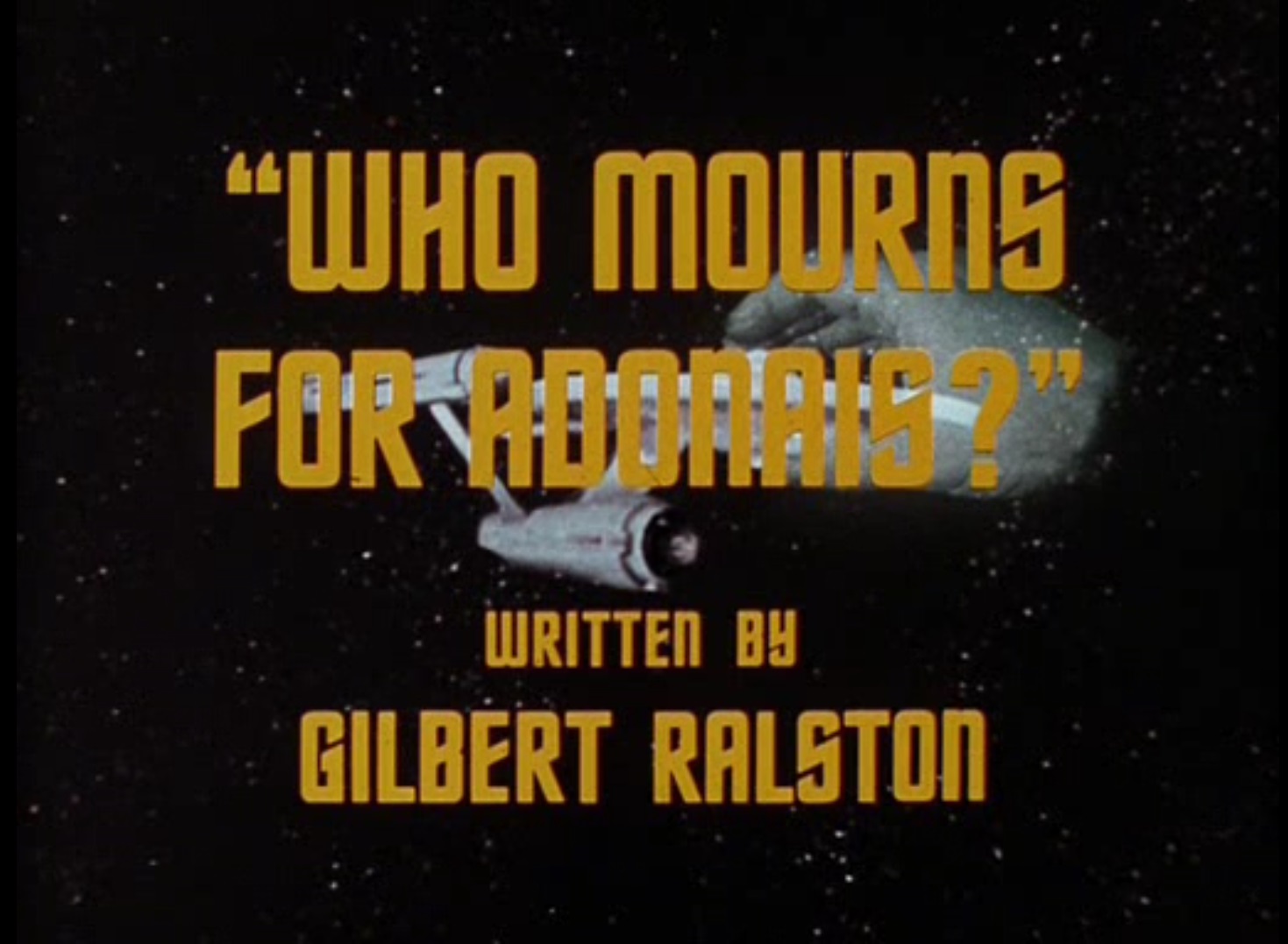
God is in the Details

by Janice L. Newman
After Star Trek’s incredible second season debut episode last week, we were on pins and needles. Would the episode hold up to the new standard set by “Amok Time”?


by Gideon Marcus
Back in the Starship Again
The Fall season of television is upon us again. Some shows from last season did not survive the chopping block: good riddance to Gilligan's Island and It's About Time, genuine tears for the loss of Green Hornet, and shrugs for Love on a Rooftop, Laredo, Occasional Wife, and like that.
One show got a genuine ending: Richard Kimball finally caught the one-armed man, and now he can live a normal life. At least, until The Invaders get him…

Notice how she keeps her pinky fingers just out of sight…
Other shows were renewed–from the stalwart Gunsmoke to the Mexican…er…African spectacle that is Tarzan. But let's face it. The program we were really waiting for was Star Trek, what Analog editor John Campbell called, "the first adult science fiction on television".
Would series star William Shatner make good on his threat to "put more of himself in the role"? Would new cast member Walter Koenig, as Ensign Chekov, be as endearing as the rest of the crew? After that dynamite, if not completely consistent, first season (not to mention a summer of reruns that held up remarkably well), would the second season knock our socks off?
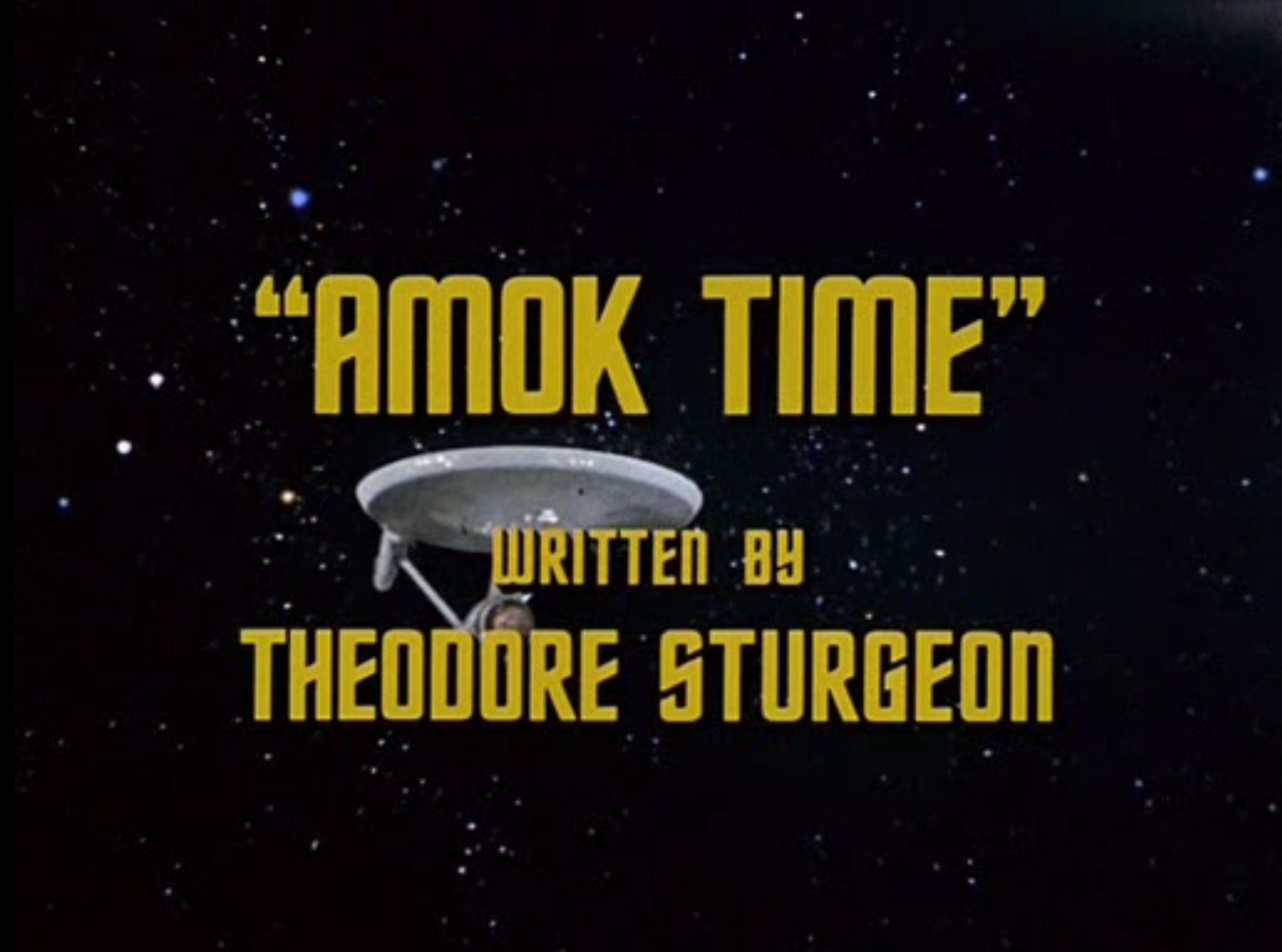
I, for one, was not disappointed. Production pulled out all the stops, most notably with an entire new score provided by Gerald Fried (echoes of which can be heard in his scores for episodes of the 1966 spy show, The Man Who Never Was and in this week's debut episode of Mission: Impossible). Trek veteran, Joe Pevney, does a commendable job with directing, particularly in the scenes set on Vulcan, Dutch angles conveying the temporary madness of Mr. Spock. Mainstream science fiction once again contributes a script, this time from the pen of the illustrious Ted Sturgeon.
Chekov does not have many lines with which to distinguish himself, but his repartee with Mr. Sulu is engaging. As for Shatner, well, he definitely brings a few more personal tics to his portrayal of Captain Kirk. It's a bit more broad, more punctuated a performance. But he's still enjoyable to watch, convincing in the role.

"So, how did you enjoy working with Mike, Mickey, and Peter?"
That's the technical aspects. What about the episode itself? For that, I'll turn to my esteemed colleagues on the panel…
Ancient Rituals and Alien Biology

by Erica Frank
The episode begins with McCoy telling Kirk his first officer has a problem: he's been restless, avoiding meals. Kirk doesn't believe it; Spock is probably just meditating and wishes to avoid human contact. Then they see nurse Chapel ducking away from Spock's quarters as Spock throws a bowl of plomeek soup at her.
Spock is angry enough to be violent. This is shocking to everyone — Chapel, McCoy, Kirk, and the audience.
Has he been dosed with some kind of drug? Perhaps he was exposed to a natural hallucinogen that had the reverse effect of the pollen in This Side of Paradise — one that made him angry instead of happy.
No, he hasn't been drugged; his body is turning against him. The Vulcan mating drive will kill Spock if he doesn't get to his betrothed on Vulcan, with whom he was mind-bonded when they were seven years old.
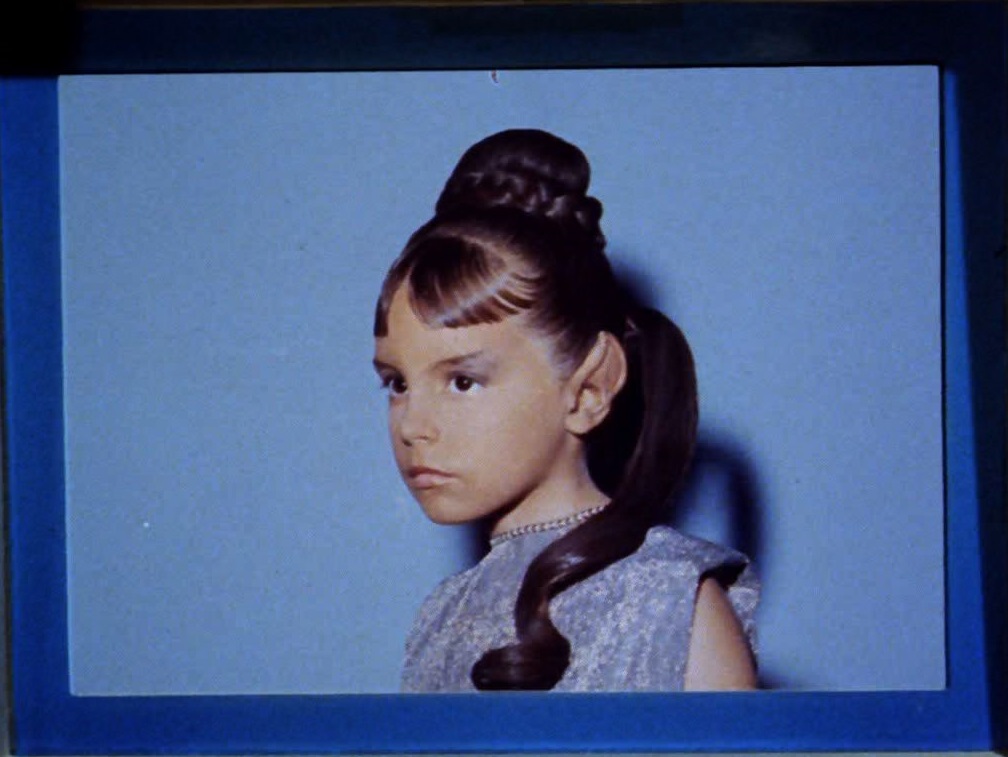
Young T'Pring, looking every bit as serious as we expect a Vulcan child to be.
Kirk and McCoy accompany him to the ceremony, the Koon-ut-kal-if-fee. When they arrive, they get a shock: T'Pring demands that Spock win her in combat according to the ancient Vulcan rites.
Spock has no choice. He is deep in the plak tow, the blood fever; he must fight for her or die. T'Pring, accompanied by Stonn, chooses Kirk as her champion! Spock objects, but the officiating matriarch T'Pau simply asks, "Art thee Vulcan or art thee human?"
"I burn, T'Pau," he answers. "My eyes are flame. My heart is flame." He may not like T'Pring's choice, but if he cannot walk away, he cannot deny her.
Kirk accepts, figuring he'll roll with the punches, fall down, and leave Spock to his bride. After he agrees to fight, T'Pau informs him that this fight is to the death.

They fight with lirpa, a Vulcan weapon. Kirk, of course, manages to get his shirt torn.
After they disarm each other, McCoy treats Kirk with tri-ox, intended to counter Vulcan's thin air and heat, to make him closer to Spock's equal. They switch to ahn woon, a weighted long belt, and Spock uses his to capture and strangle Kirk… to death.
With Kirk's death, the blood fever fades, and Spock is once more his rational self. Before they leave, he insists that T'Pring explain her choice.
Spock, she says, has become a legend, and she does not wish to marry a legend. She wants Stonn. Kirk does not want her; if Kirk won, he would leave her to Stonn. If Spock won, they would wed… and he would leave, and she would still have Stonn.
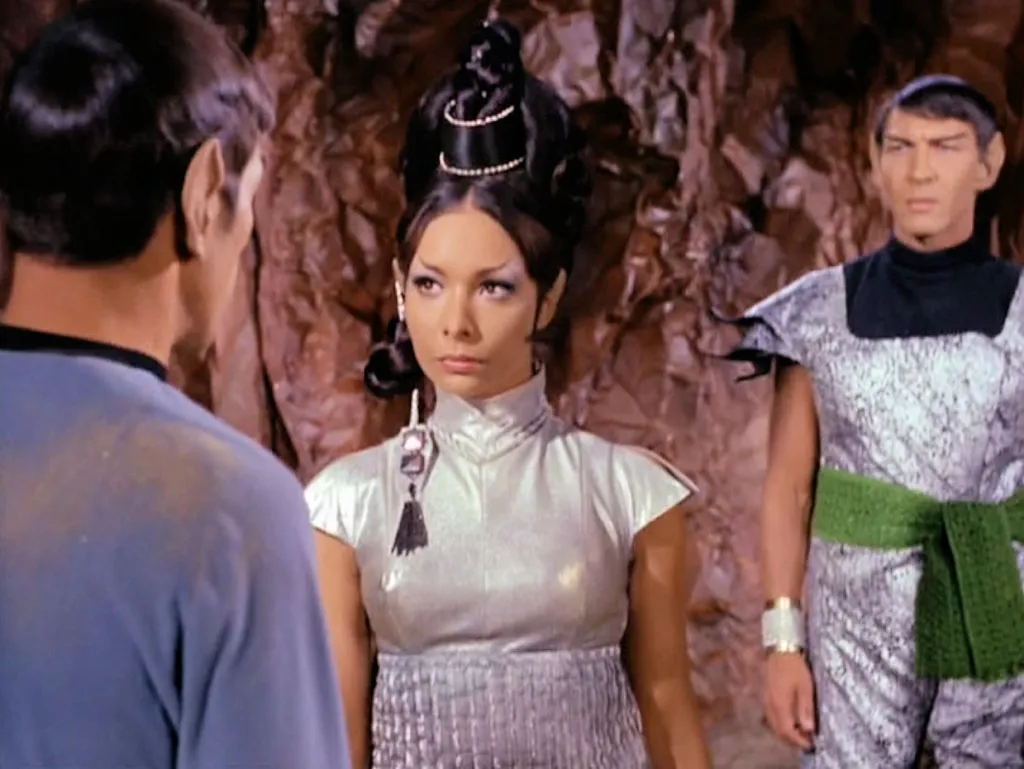
T'Pring coldly explains why she made Spock fight his best friend instead of her chosen.
I think T'Pring has vastly underestimated Kirk's potential for spite. If he “won” her by killing Spock, he might haul her in front of a Federation tribunal for arranging the death of a Starfleet officer. He certainly wouldn't leave her to enjoy her boyfriend.
McCoy asks Spock for his orders, since he's in charge now. (I have trouble believing this; if a first officer kills his captain, he just takes over?) They beam back to the Enterprise, where Spock makes plans to resign and turn himself in.
Kirk comes out of sickbay to interrupt him. Apparently, McCoy actually dosed Kirk with something that simulates death. Everyone is fine, and now they can get back to their diplomatic mission.

Spock is overjoyed to see him alive. Because Starfleet needs good captains, of course. Not because it matters to him personally.
Color me unconvinced. What kind of "mate or die" drive vanishes if the one driven defeats his opponent? Why lose interest upon winning? I can only imagine that Spock's use of the mind-meld technique with various humans and aliens has weakened his bond with T'Pring, and that the shock of losing his dear friend completely erased whatever remaining mental bond he had with her.
That quibble aside, this really was fine stuff. "Amok Time" was perhaps the first true Star Trek episode, rather than a random science-fiction story with Trek characters. It built on what we know about the universe and the crew, and showed us a challenge that only they could face—which they resolved in a way that only they would.
Five stars.
The Birds and the Bees are not Vulcan

by Andrea Castaneda
It’s something to behold: a stoic man in his most vulnerable state. For the first time in the series (at least, without the interference of a spore or mickeyed water), the audience sees Spock’s steely veneer crack. He dashes soup across the room, verbally accosts his crewmates, and even undermines his captain’s orders. Yet his insubordination is revealed to come from a great source of anguish for the Vulcan. The anguish from having to suppress a biological drive, and being unable to tell anyone about it.
Now, I am no Vulcan. My blood does not “burn” and I am not compelled to return to my birthplace to spawn. But the fear, shame, and guilt he experiences– for something he has no control over– was something that deeply resonated with me, especially in my teenage years.
I’ll spare you the details, but my "birds and the bees talk" was nothing short of excruciating. “Don’t do this,” and “don’t do that”, lest you will be seen as a fallen woman. Any further questions I had regarding such an “uncouth” topic were treated with either avoidance, reluctance, or disgust. I shan't disclose how I cope with my nature now, as it is– to quote the vulcan– “a deeply personal thing”. However, what I will say is that my parents' fumbling attempts at sex-ed negatively impacted me growing up. It taught me to never speak up about “shameful” things, which in turn led me astray in many situations. I am relieved to see today’s youth has become more open and matter-of-fact regarding such topics. But there are still many who wish to hide behind old attitudes. Like the Vulcans, who seem partial to the same provincial mindset of my grandmother. I understand that there can be “logic” in knowing when to be prudent about such things. But considering how their biology can prove lethal when untreated, both to themselves and to others, where is the logic in choosing to avoid this topic altogether?

T’Pau explains nothing to Kirk before handing him a blade and telling him to fight his best friend.
The way I see it, regarding both the Vulcans and us humans, it is an exercise in futility. We want to feel safe and secure, and the only assured way to do so is to master nature and our own bodies. But it is hubris to think that a strong enough will can override mother nature. Our bodies will fail us, in one way or another. And the only way to conquer that fear is to confront it head on. The way to start is to name what ails us.
Of course, Vulcans and the world of Star Trek are not real but rather created by our human men– and at least one woman– here on earth. This epsiode leaves me asking why the writers, who wish to portray an idealized future, still feel that discussing sex is a terrifying prospect? [q.v. "Charlie X" (Ed.)]
Still, apart from my quandaries, this episode delivered a compelling story. It included wonderful details that upped the stakes, gave us a look into the enigmatic Vulcan culture and the politics of the federation. Season two starts by hitting a home run and I sincerely hope it continues this momentum.
Five stars.
POST-MODERN LOVE

by Joe Reid
Something old.
Something new.
Ritual combat.
Something blue.
Most of these are considered tokens of good luck. The illogical creatures that we humans are, we rely on good luck charms, because of all the lying, trickery, bribery, and violence that we employ to convince other people to marry us doesn’t seem to be enough to make our unions last. According to the U.S. Department of Health, Education, and Welfare, last year (1966) there were 1,857,000 U.S. marriages. The same year 499,000 divorces happened. The number of divorces for last year is 26% of the number of marriages. With tallies like these, it’s obvious that we need help.
Along came the exciting first episode of the 2nd season of Star Trek to show us how beings who value logic and reason engage in the act of marriage. How, you ask? They do it with lying and trickery, and of course, violence.
“Amok Time” is the name of this week’s episode of Star Trek. I want to start off by saying that it was splendid looking! From the futuristic space outfits to the details in the props. I was flown off to another world!
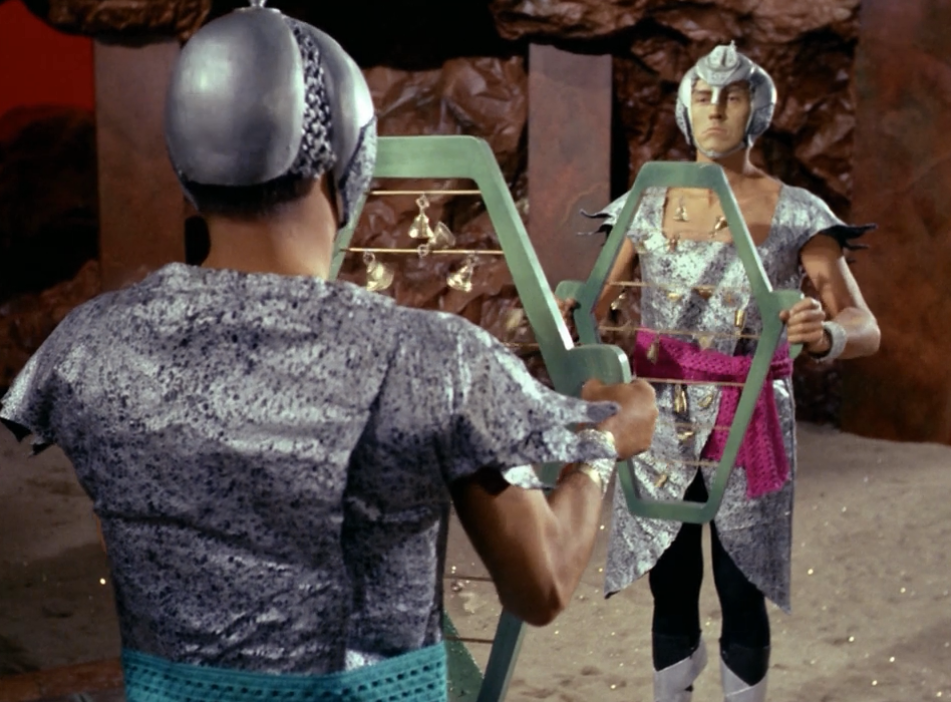
Silver future fashion
The show starts out with the Vulcanian (or Vulcan), Mr. Spock, behaving in a “most illogical” way. He acts like a brute, breaking dishes and yelling at everyone. Even Captain Kirk gets an ear full. Through the course of the tale, we learn that Mr. Spock lost all his logic and control because of a Vulcan biological stage which causes him to burn with desire. For what? The same thing that the men of our day desire. A girl. Our calm and honest Mr. Spock becomes loud and irate. His indiscretions extend to lying to the new Russian kid to send the Enterprise to Spock’s home planet of Vulcan. He lies so badly that he doesn’t even remember that he lied! How many of today’s guys and gal’s tell zingers to friends, family, each other and even priests, to get to that someone they desire the most?
We then witness Spock, Kirk, and Dr. McCoy on Vulcan, where we see a bridal party with a wise matronly leader. Also Spock’s soon to be wife, T’Pring, and a bunch of big soldier types that are guards. One thing stood out to me during this scene. “Why isn’t the girl that Spock is supposedly marrying carrying on the same way that he is?”, I wondered. She was as placid as still waters. We all know what they say about still waters, and it isn’t long until we are shown the depths of trickery that T’Pring is willing to sink to.
We’ve all heard stories of friends who come to blows over a girl. So why and how would people in an advanced future society based on reason and logic descend to fisticuffs over a female? Why? Because she wanted them to. She manipulated friends to fight, not because she loved one of them, but because she didn’t love either of them, and it served her true purpose to have one eliminated. In the end we learned that even though Spock was driven insane with passion for T’Pring, she didn’t want him at all. She went through all the pomp and circumstance just to create a situation where she wouldn’t have to be with Spock. Even if it cost him or Kirk their lives. Which it just might have.
So, what is the current day parallel of T’Pring’s trickery? From Cleopatra to Mata Hari, some ladies have only wanted a man that they can control. Even today they are willing to say and do anything to get that. “Amok Time” showed a wife that was willing to destroy Spock to get Stonn. A shell of a man that she can lead.
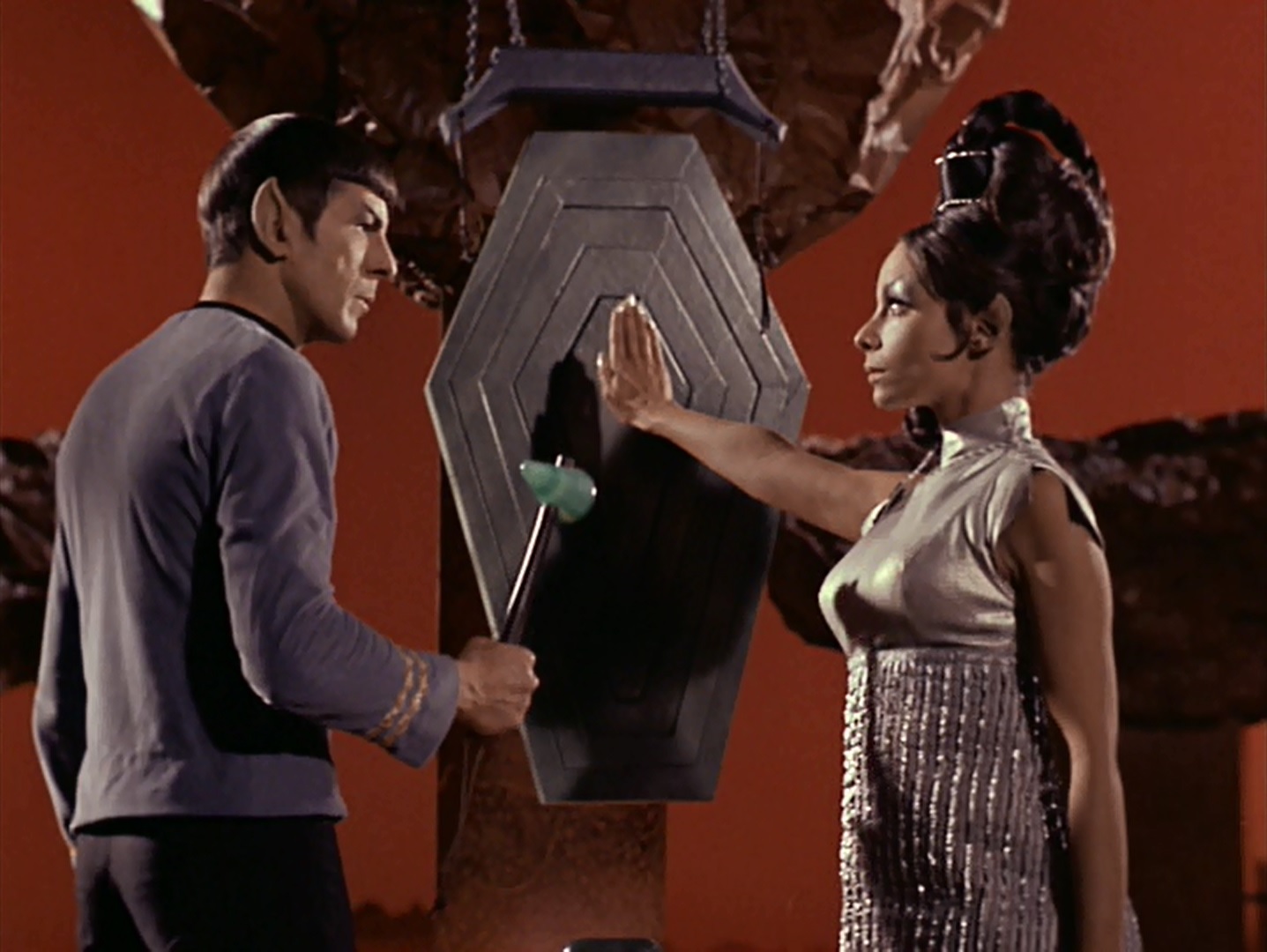
T’Pring rejects Spock.
One of the reasons that I find Star Trek so special is because, even though it takes us to strange new worlds, at the end of the day what we find on those worlds is ourselves reflected back at us. The situations in this episode were barely exaggerated reflections of the kind of people that we are and become when engaging in modern love.
5 stars
A Queer Episode

by Jessica Dickinson Goodman
This is perhaps my favorite episode of Star Trek so far; as Erica says, it may also be the first truly Star Trek episode of the series. A braided narrative of complex alien marriages, fraught male friendships, and taboo-filled – and taboo-breaking – reproductive rituals? Sign me up.
Last Spring, I reviewed a CBS "documentary" called "The Homosexuals," , noting that "There is something profoundly queer in enjoying science fiction and fantasy." I found this episode delightfully queer (meaning "odd" or "unusual", of course), each strand of the narrative challenging norms and assumptions in different ways.
The first queer thread in the episode was the Vulcan concept of marriage, starting with a wedding ritual that Spock says is "Less than a marriage but more than a betrothal." It is an in-between thing, this ritual we see, with some of the romantic declarations one might find at a regular church wedding, but also some theatrics and roles that have no analog to American marriage customs. One thing which stuck out to me was the queerness of the officiant, if we can call T'Pau that, being a woman. Sure, in Sweden and Norway, there are women conducting marriages, as well as in a precious few Presbyterian and Baptist churches (I have not heard of any women rabbis or imams, but I am open to correction). But amongst the more high-church, smells-and-bells Christian denominations, even the fairly open-minded Episcopal Church isn't allowing women further than the deaconate (and that is being debated today at General Convention LXII in Seattle; one hopes for more progress on that front). As it stands, a woman overseeing a highly formal wedding is pretty science fictional for most viewers.

The second queer thread was the intense relationships between Spock, Kirk, and McCoy. In a short television set hour, we saw these men throw themselves at each other; violate orders; disregard medical protocol; lie to diplomats of an allied planet to protect each other; fight to insert each other into the sacred rituals of a secretive culture; and lest we forget, roll around in the dirt ripping their clothes up. In our world, I see men often forced into stoicism, criticized for exhibiting any strong emotions other than anger (or perhaps enthusiasm for sports), for getting too involved as a father, for expressing affection toward each other. In that context, it was a balm to see Spock's beatific smile at Kirk's survival, McCoy's tenderness and protectiveness towards Kirk's "dead" body, or Spock's simple but powerful defense of his friends: "They are not outworlders. They are my friends. I am permitted this." One might hope for a day when all people are "permitted" this.

The third queer thread was the deeply taboo – to Spock at least – topic of Vulcan reproduction. As Andrea points out, the conversation between Kirk and Spock on this topic is deeply, and to me comically, awkward. But it also lit my imagination on fire, like all good science fiction and fantasy does. What does Spock mean when he analogizes his species' form of reproduction to spawning salmon? Is it just the traveling aspect, or does he have some kind of roe sacks hidden under his greenish-skin? And what does it mean for an entire society of beings who prize emotionlessness, and call it "logic" , to have every single member of it engage in a "time of mating" which is a "madness which rips away our veneer of civilisation"? It is queer both because this approach to reproduction exists at an oblique angle to our own human conceptions of it, but also because it deeply challenges our own assumptions about how other intelligent lifeforms might structure their societies, pick their bed fellows, and understand both their and our families and worlds.

A few of us here wrote stories, cocktail recipes, songs, articles, games, and drew art for a summer fanzine Gideon organized called The Tricorder, touching on the strange and wonderful worlds that Season 1 of Star Trek had given us to play in. With all of these new, queer threads to unwind and reknit into new creations, I can't wait to see where Tricorder #2 might take us.
Five stars.
Speaking of Star Trek, it's on TONIGHT! By all the Ghods, it looks like an interesting one…
Here's the invitation!
Also, copies of The Tricorder are still available — drop us a line for details!

by Joe Reid
I'm a man who enjoys science fiction, having read his share of it. I am also a student of religious thought, having again also read a good amount. I did not start off reading the books of C.S. Lewis with the intent of seeking spiritual insights. After all, I received none on reading The Lion, the Witch and the Wardrobe (1950) as a child. Nor did I come to a better understanding of forgiveness in the pages of Prince Caspian (1951). I learned nothing of redemption from The Voyage of the Dawn Treader (1952). The Silver Chair (1953) did not strengthen my grasp on the doctrine of sanctification. Although the concepts were present on the page, my young heart only cared about the adventures in the wonderful land of Narnia. I loved all of the Chronicles of Narnia. It wasn’t until I read them again as a man, through mature eyes, that I bore witness to what lay beneath. On that second reading I was also no stranger to many of Lewis’ other works.
Lewis was an absolutely brilliant Christian philosopher. Some of his seminal works of religious thought include Mere Christianity (1952), The Problem of Pain (1940), and The Four Loves (1960). He is better known for his other works of fiction, which include The Screwtape Letters (1942), The Great Divorce (1945), and Till We Have Faces (1956). All of these beautifully penned volumes are rich treasures of wisdom, and I found them edifying to no end.

Clive Staples Lewis passed away a few short years ago in 1963. His death spurred me to revisit his works. It was then that I came across books of his that I was not at all familiar with: Three books of what appear to be science fiction from the hand of a writer that I grew to love and admire. The first of these works was released back in 1938. Suffice it to say, I was very enthusiastic to read the stories that have come to be known as the Space Trilogy.
As a man who enjoys science fiction, and who wrote such a glowing preface regarding my love for the works of C.S. Lewis, one would imagine that I also loved The Space Trilogy. The short answer is yes, I enjoyed reading these books. That said, I do not consider these books to be works of science fiction. Some discussion is required to figure out what they actually are, if not science fiction.

The first of the three novels, Out of the Silent Planet (1938), is the nearest that any of these books come to being SF. It follows Elwin Ransom, a philologist, who is abducted by two men, taken from Earth in their spacecraft to the planet Mars for an unknown purpose. (Philology is the study of the structure of language and literature.) What follows is a story rich in the descriptions of the world of Mars, or Malacandra as it is known to the native species, deep connections with the peoples of the world, and revelations as to the histories of Mars, Earth, mankind and Martian kind are laid out before us. For me, it was a pleasurable read.
Although there are elements of science in the story, the world and the inhabitants of the world might as well have been Narnian. Their stated motivations of familial love for some and ambition for others appeared to be the foundation for his later, more popular works. Also, no one in the book felt alien; fantastic, yes, but not alien. The Martians or Malacandrans, in the end, showed more humanity than any of the humans in the story.
If I were to place this book into a genre, I would call it fantasy/science fiction or science-fantasy for short.
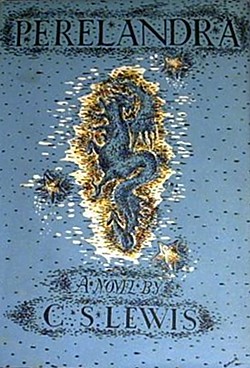
In the second novel, Perelandra (1943), we visit Elwin Ransom again. He is a changed man living in a world changed by the events of the first novel. This time, Ransom is called to the adventure he embarks upon by a being he met in the last book, an adventure to Perelandra, the planet Venus, to help a woman on this young world from being corrupted.
The tone of this book starts off the same as the tone in the middle of the first book. The world is beautiful, yet different than Malacandra. Everything is fresh and exciting, until the introduction of one character that changes everything. It’s a story that felt enriching at first, but suddenly became disturbing. An object of relaxation which became a source of anxiety. An anxiety that one is not released from until near the end of Perelandra.
Perhaps Perelandra might qualify as science fiction? The answer again is no. This book forced me to stop reading for a time recover from the dread and terror that were a part of this story. I found myself frightened not only of the characters, but for them at the same time. Reaching the end of Perelandra and escaping with my life was the reward for completing the volume. It's an excellent book, but none of it is science fiction: there are no elements of the world or the characters that are forward looking or advanced. Even the method employed to travel to Venus was more ancient and magical than science.
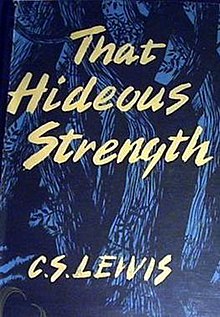
The final book of the Space Trilogy is called, That Hideous Strength (1945). The entirety of this story is set on Earth (Thulcandra). We are introduced to new characters: a newly married couple named Mark and Jane Studdock, both well educated and ambitious young people. This story overall is cold and gray. Gone are the colors and wonders of the other worlds.
Earth is the way that it is because of events that were revealed in the other books. The tone of this story is very heavy and very dark, becoming heavier and darker with each turned page. The reader that perseveres is rewarded with a turn of fate so utterly unexpected and satisfying that one is left feeling well served by the story, even though some of what happened made absolutely no sense at all.
Again, this is not science fiction. The scientific elements in this story are so devoid of hope that the solution to the main dilemma of the book has to find its redemption from the fantastic. Neither is this story fantasy, nor terror.
This volume successfully avoids a genre and it is not until one takes all 3 novels together as a unified work that a genre can be laid to bear on the triptych.
In the same way that a mature reading of the Chronicles of Narnia as an adult reveals them to be at the core works of Christian philosophy to educate children, the Space Trilogy is a work of Christian philosophy to educate adults. The type of adult that enjoys science fiction.
These volumes are philosophy lectures cleverly wrapped in the garb of science fiction. This is not a criticism: I find them to be beautiful, terrible, revolting and inspiring. I love them for what they are regardless of what they pretend to be.
Another reader, who does not hold the same religious baggage that I carry, might find The Space Trilogy of C.S. Lewis boring at times and heavy handed at others. Unless one develops a desire to finish the stories, as I did, each book provides the user with many opportunities to exit and I assume that many do.
Again, I love the stories in the Space Trilogy, not necessarily because of what happened in them, but more because of how it made me feel and where it left me in relation to my faith when all was said and done. I would recommend this series to those who already love the works of C.S. Lewis and readers of science fiction who hold religious convictions. I would not recommend it to readers of science fiction that do not.
5 stars
Operation: Summarize!

by Gideon Marcus
The Enterprise is checking upon the farflung colony of Deneva, which hasn't sent out a message in a year. One million souls are thus feared for. Captain Kirk has a personal reason to be worried–his brother and his family reside on this planet.
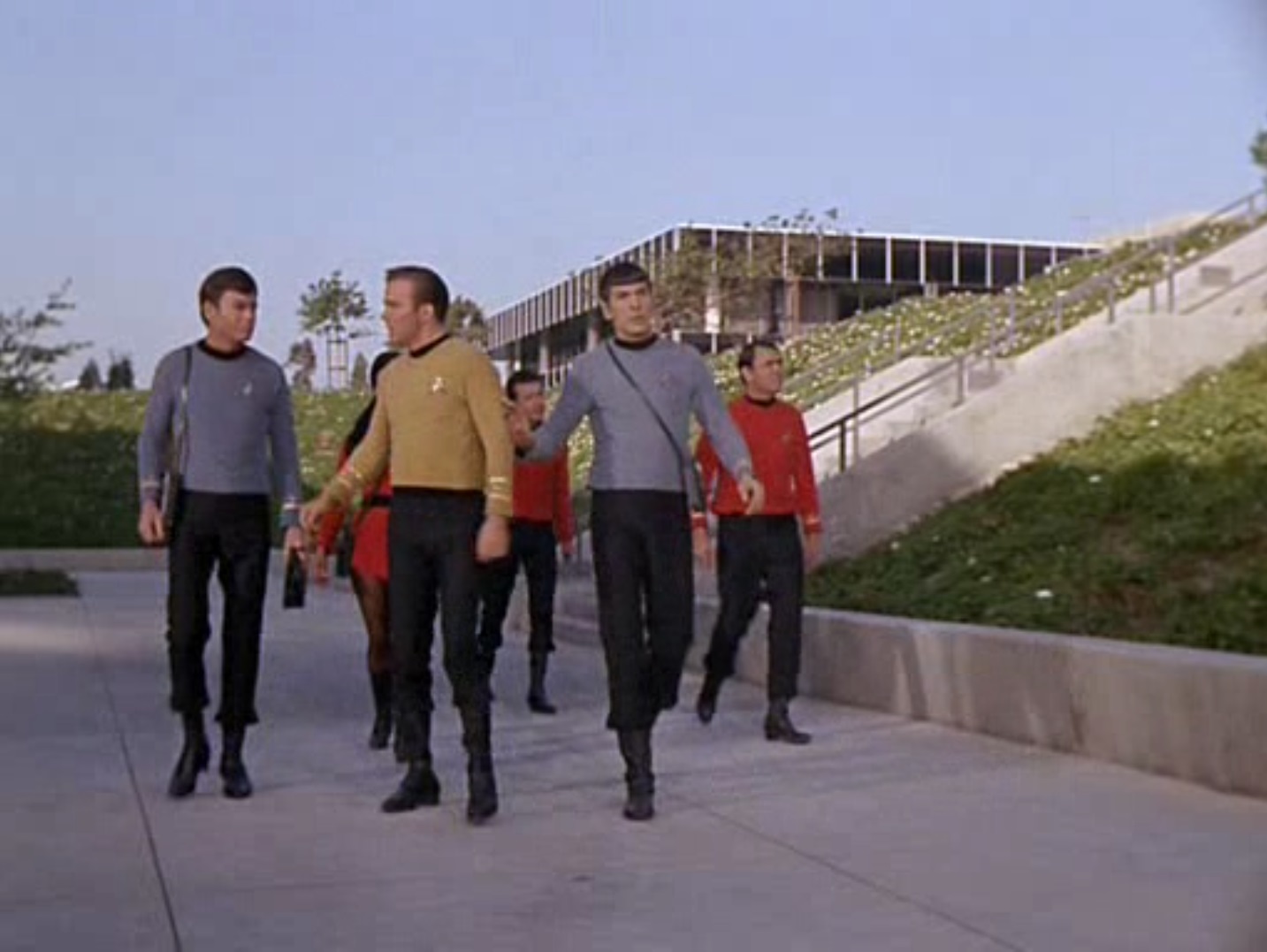
Starfleet's finest head for an interview at TRW.
Their fears are soon realized. Beaming down to the planet, Kirk and co. determine that the entire population has been taken over by parasitic pancakes, who use pain to ensure their hosts to their bidding. They have apparently been waiting for the day a starship came a-calling, so that they could continue their rampage through the universe (why they didn't use the ship they came in is never explained…) While investigating the planet's surface (again, only the most expendable personnel are sent, including Kirk, Spock, McCoy, and Scotty), Mr. Spock is infected by one of the alien invaders.

"Ooo! That smarts!"
Kirk's brother, Sam, is dead, and his sister-in-law, Aurelian, taken aboard the Enterprise for treatment, soon perishes. But Kirk's nephew, the Denevan populace, and Spock may yet be saved. McCoy and the scientists in the Enterprise's 14 science labs throw the book at a monstrous specimen that Spock secures from the planet. No dice. No amount of radiation, heat, or anything else will destroy these critters (or at least, nothing that will destroy them and not also the host.)
There is a clue, however. One Denevan took a shuttlecraft into the sun. Before he burned up, he announced that he was "free" of the alien. This is the clue Kirk needs (and everyone else misses). Apparently McCoy only thought to use infrared (heat) and very high energy radiation (microwaves and X-Rays) since the captain deduces that visible light is the key to killing the beings.
Spock volunteers to enter a light chamber and be subjected to a zillion candles of light. It kills his parasite, but also leaves him quite blind. Turns out they didn't need to use the whole spectrum of visible light. Only the invisible spectrum of invisible light.
Yes, I was confused, too.
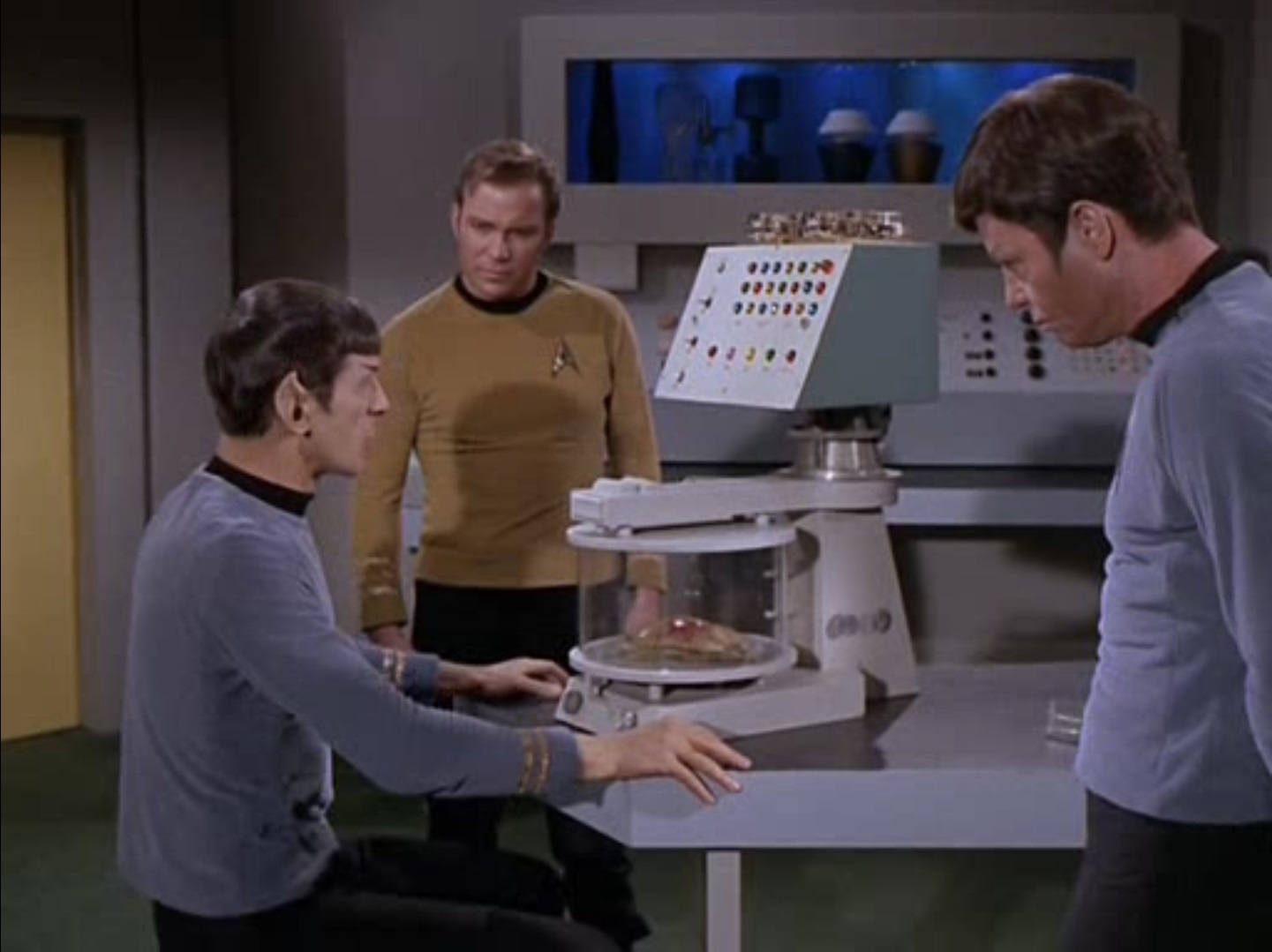
"We've tried everything! Heat! Radiation!" "What about… light?" "Yes, Jim. I said we tried radiation. You think we're stupid?"
Turns out the key wavelength is ultraviolet light. Correct me if I'm wrong, but that's generally lumped in with "radiation", but perhaps McCoy was being extremely narrow in his definition. Anyway, Kirk dumps a bunch of "tri-magnesite" ultraviolet beacons in orbit around Deneva and sets them off. The radiation (that isn't radiation) is so intense that it even kills the parasites that are indoors, but doesn't manage to bake the colonists (maybe the only ones who survived were Black…)
Anyway, there is a lot to enjoy about the episode, from Nimoy's performance (see below) to the absolutely stunning setting (the TRW campus, from which were monitored the space probes of Pioneers 0, 1, 2 and 5, Explorer 6, and the Orbiting Geophysical Observatories).
But the science is ridiculous, even for television. Really Voyage to the Bottom of the Sea stuff. The title is one of the least inspired of the series, too.
It's a bit of a shame that this is the episode that concludes the first season. Nevertheless, the strength of the others we've seen this season suggests we're in for a great time come fall. And in any event, it's certainly not "The Alternative Factor".
Three and a half stars.
Operation: Indecision!

by Jessica Dickinson Goodman
Captain Kirk seemed to be of two – or more! – minds in "Operation: Annihilate!" His curiosity wars with his concern for his ship's safety early in the episode when the Denevan vessel hurls itself into the sun; his fear for his brother Sam and his sister-in-law Aurelean's safety on Deneva competes with his commitment to civility with his crew, leading him to snap at Lieutenant Uhura in a moment of uncharacteristic and uncaptainly unkindness. (To her credit, Uhura responds with complete professionalism and competence.)
But his deepest conflict becomes clear when Commander Spock and Kirk's nephew Peter become the prey of the fleshy flying flapjacks that served as this episode's villains. Kirk watches as Spock is consumed by pain, overwhelmed by it, then fiercely begins to resist it using his Vulcan training. This moment encapsulates the sweet tension that gives this episode its flavor:
Captain Kirk: "I need you, Spock, but we can't take any chances. We'll keep you confined for a while longer. If you can maintain control, we'll see. My nephew. If he regains consciousness, will he go through that?"
Dr McCoy: "Yes."
Kirk: "Help them. I don't care what it takes or costs. You've got to help them."
McCoy: "Jim, aren't you forgetting something? There are over a million colonists on that planet down there, just as much your responsibility. They need your help, too."

"I need you, Spock."
Though Kirk brings up his nephew's fate throughout the episode, it is his relationship with Spock – and his fear for his well being – that drives much of the action. This episode, more than many others, gives us language for that relationship from both Dr McCoy and Kirk himself: "affection," "best first officer in the fleet," "need," someone McCoy needs to "take care of." The look of devastation on Captain Kirk's face when he realizes that Spock might have been permanently injured was powerful, though it did make me wonder if Star Fleet can be so advanced if it has no clear accommodations for blind people. I would hope for more from the future.

"Who put this #$&@ table here?"
Like the other reviewers, I found the science in this episode silly; I kept getting hung-up on how the Ingrahamians were flying in the first place and whether we were supposed to see them as a devious hivemind or a reactive predator. But Kirk's conflict was delicious, the acting was great fun, and it made me check my TV Guide for when the next season starts. See you all back here again in September!
Three stars.
Operation: Genocide!

by Joe Reid
If there is anything that I learned from this week’s episode of Star Trek, it is that Vulcanians are strong and powerful life forms with amazing physical and mental gifts. "Vulcans" on the other hand are the discount Woolworth's version of Vulcanian. I seem to remember that when Mr. Spock was a Vulcanian, he could read the mind of an alien lifeform, get to know that lifeform’s intentions and desires, and find a way to help it. Remember just a few short weeks ago, on the episode, “Devil in the Dark ", where Spock saved a misunderstood creature from the humans that were going to exterminate them? Now in “Operation: Annihilate!”, creatures, intelligent creatures no less, are no longer afforded the benefit of the doubt to be misunderstood. They can only be annihilated.

Woolworth's – discount Vulcans available now…while supplies last!
Dear reader, please forgive my jeering of Spock. As a character, I find him to be a standout and thoughtful character most of the time. Apart from the limited nature of the abilities that he displayed in this episode, I normally find him compelling to watch. The problem that I had with this episode was the handling of the creatures themselves. The nameless, formless, flying, buzzing, lumps of Horta excrement, that conquered 3 planets and had the amazing power to control men and make them build ships. This seems like an intelligent species that is after something. I find myself truly wondering what it was. “Operation: Annihilate!”, completely ignores that, just following along with the dictate presented by the title.
The episode starts out with a mystery. Mass insanity is gripping entire populations on planets and jumping to other planets, and no one knows why. The best sci-fi takes us on a journey of discovery, to find out the whys of whatever the writer has brought to us. This week, we viewers start down a path and are presented with a creature that has more abilities than any that we have seen on the show thus far. It is invisible to scanning. As stated before, it flies, directs populations to do their bidding, and buzzes like a honeybee, for crying out loud.

"I suddenly have a craving for pancakes with honey syrup…"
Kirk and the others at one point of the episode suppose that this creature may be part of a larger organism that exists in a great beyond. After being presented with so many proofs of intelligence, it is disappointing that the crew of the Enterprise, so intent on meeting new life forms, drives forward towards destruction over discovery. Towards demonization of actions, over deconstruction of intent. Towards annihilation over understanding.
This creature had the potential to be one of the, if not the most interesting and complex creatures that we could have witnessed in the cosmos. Instead, these single celled marvels are treated like a disease in need of penicillin. What a waste. If only a proper Vulcanian were present this week, something could have been made from the unsolved mysteries left unexplored in this episode.
2 stars
Operation: Vulcanalia!

by Abigail Beaman
As it turns out, Vulcans are not just pointy-eared humanoids with very little variation to their anatomy compared to humans. We learn an awful lot about Spock's people from this latest episode. Now we did know a few things. One of the earliest examples is that Spock’s blood isn’t a red color, but instead green. This is due to Vulcans' blood being copper-based instead of iron-based like our human blood. But thanks to this episode, not only do we learn more about Vulcans, but we might have learned just how secretive Vulcans are about themselves with other races.

So much to this man…
In "Operation: Annihilate!", we discover that Vulcans in fact have two sets of eyelids, after Spock recovers from blindness caused by the light that kills an invasive alien parasite living inside him. Similar (I guess) to felines, Vulcans adapted these inner eyelids to protect their eyes from the harsh and unforgiving sun on the planet, Vulcan. This allows our first mate, Mister Spock to regain his eyesight after the exposure to 1,000,000 candles per square inch. Yet then an eyebrow may raise, as earlier in the episode when he first loses his sight, Bones blames himself. Bones is sure the damage is permanent and nothing could have saved Mister Spocks’ eyes. Bones not knowing that Mister Spock has two sets of eyelids initially really bugged me. Isn't he the ship's Chief Medical Officer? But maybe it's not his fault that Spock's internals are unknown to him. Maybe Vulcans keep their racial anatomy secret. That would explain why McCoy is so irritated all the time–his patient keeps holding vital information from him!
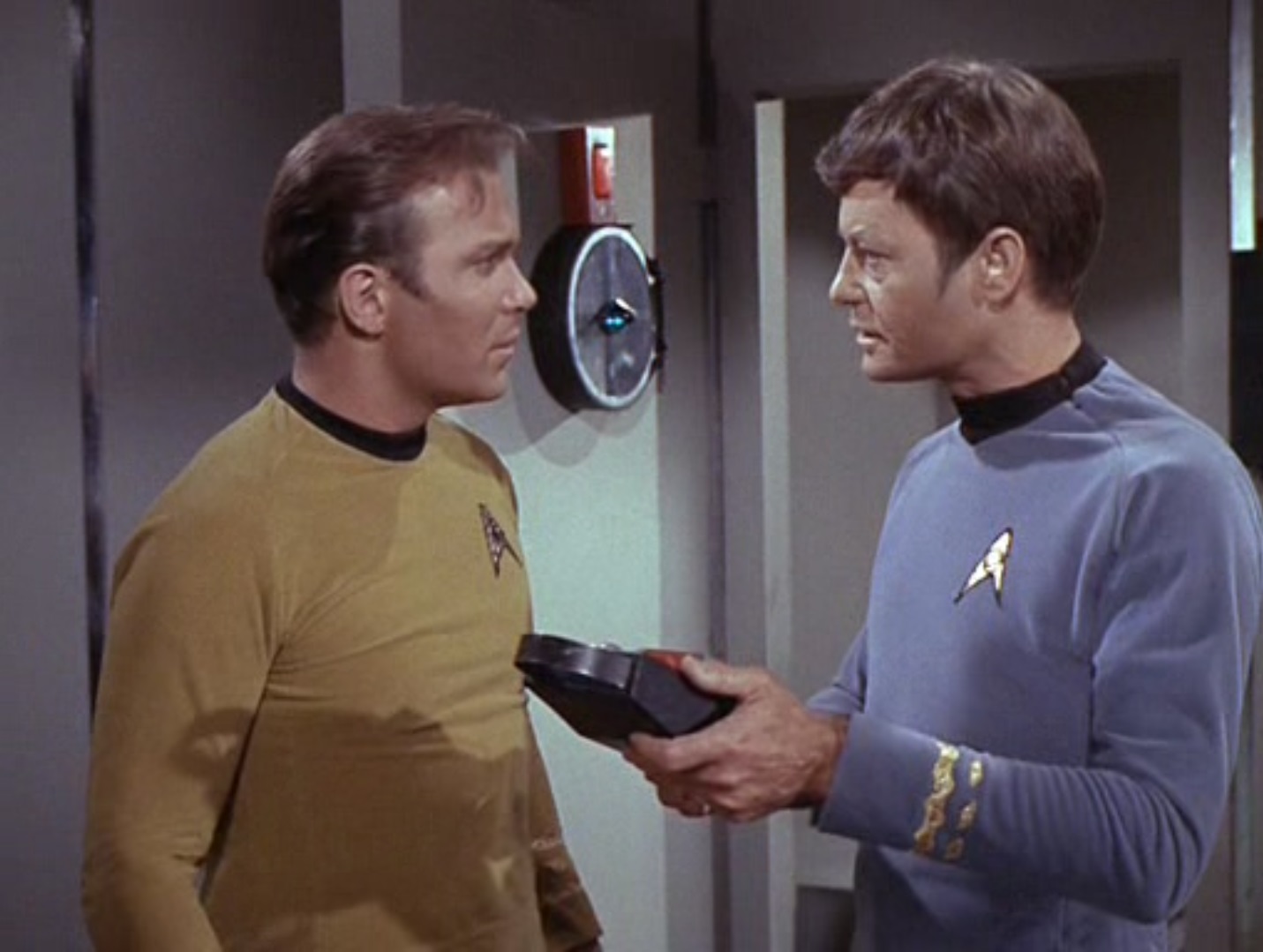
"I blame myself." "I blame you, too!"
Now I’m not saying this episode was good. For the most part, I actually felt very unhappy that this is the episode season one had to end on (hopefully season two will continue on with good episodes like “The Devil in the Dark” or “Shore Leave”). I do in fact feel that the anatomy Daugherty comes up with within this episode is a cop-out to ensure a somewhat happy ending. [Note: Daugherty is the Director. Carabatsos is the writer–those darn credits flash by so fast! (ed)].
Yet something I would also like to point out is Leonard Nimoy’s acting of the stoic and computerized Mister Spock fighting the human emotion, pain. Throughout the episode, after Mister Spock is infected, he tries everything in his Vulcan power to deny the pain he is in. Leonard Nimoy really shows this struggle that Spock faces; his creeps rather than strides, his voice is harsh, and every once in a while, he seems to twitch in pain. It sent shivers down my spine. I was very enthralled by Leonard Nimoy (well at least more than usual) by his acting in this episode. It was probably one of, if not the only saving grace in this episode for me (well also Scotty about to shoot Spock; remind me next time when I wanna pick a fight with him).

"Freeze, Mr. Spock!"
This episode left me empty inside, and for that, I have to rate it pretty low.
Two and a half stars.
Operation: Copycat!

by Erica Frank
The aliens in "Operation: Annihilate!" are obviously inspired by Heinlein's classic, The Puppet Masters, but the differences are definitely for the worse. These aliens don't attach themselves to humans—they sting them once, injecting them with "tentacles" that spread throughout the nervous system. This allows them to control people through pain—pain so bad it can kill. It's unclear how the aliens coordinate their efforts and communicate with each other. (Looks like more evil telepathy. Sigh.) It's also unclear what the aliens themselves do after their planetary takeover, other than flutter around in shady spaces.
These aliens have been moving through planets, causing "mass insanity" and destruction for several hundred years. If the pain immediately killed people, they wouldn't last long enough to reach new worlds. So it seems only the ones who resist control are in danger, or they'd be like a virus that burns out its host before it has a chance to transfer.
Because of this, I doubt Peter—Kirk's nephew—was at risk of death. Rather, he'd likely succumb to the alien control. He'd wake up surrounded by strangers, only to be told his parents are dead. He might well give up fighting entirely; he'd have no reason to push through the pain. So it's unclear why Kirk needs to find an immediate solution.
This episode brings too many questions. While it's common for science fiction to leave possibilities for the reader or viewer to ponder, in this case, the potential answers often make no sense.

We're supposed to believe large tentacles like these are spread throughout the nervous system… without being visible through the skin? And that removing them wouldn't stop the pain? In that case, what's causing the pain?
Kirk should be able to just declare the planet off-limits, infected, and sabotage its space travel while bringing in a full scientific team. Or will the pain quickly kill people? …In which case, how did the aliens last long enough to get to new worlds, and how have they taken over only a handful of planets in several hundred years? Or are there dozens of others we don't know about?
If they haven't been going through dozens of planets, what have they been doing for those hundreds of years? Do infected humans eventually "hatch" into a swarm of flappy blob aliens that can infect new people? Or do the flappy-blob versions reproduce on their own, with the injected hosts eventually dying along with their tentacles? Do the injected people reproduce normally, and have alien-controlled babies? (Eew.) Or will each child need to be infected?
Regarding their destruction: If they stick to shaded areas, how will bombarding the planet with ultraviolet light reach them? Any of them that are inside buildings will be safe. (And in the meantime, the entire human populace will have very bad sunburns.)
Two stars. While the aliens were interesting and the underlying ideas were good (which makes sense; they were based on a terrific book), the plot itself was disjointed and incoherent. I was more intrigued by McCoy's frequent wardrobe changes than the story itself.
Summer reruns have begun! Join us tonight at 8:30 PM (Eastern and Pacific) for the pilot that sold the series: "Where No Man Has Gone Before!
Here's the invitation!

by Janice L. Newman
Star Trek has given us some of the best science fiction on television. It’s also, like any weekly show with scripts written by different authors, had some mediocre episodes. But watching with a large group every week, we’ve found that even episodes that had many detractors still had at least a few fans among us.
Until now.
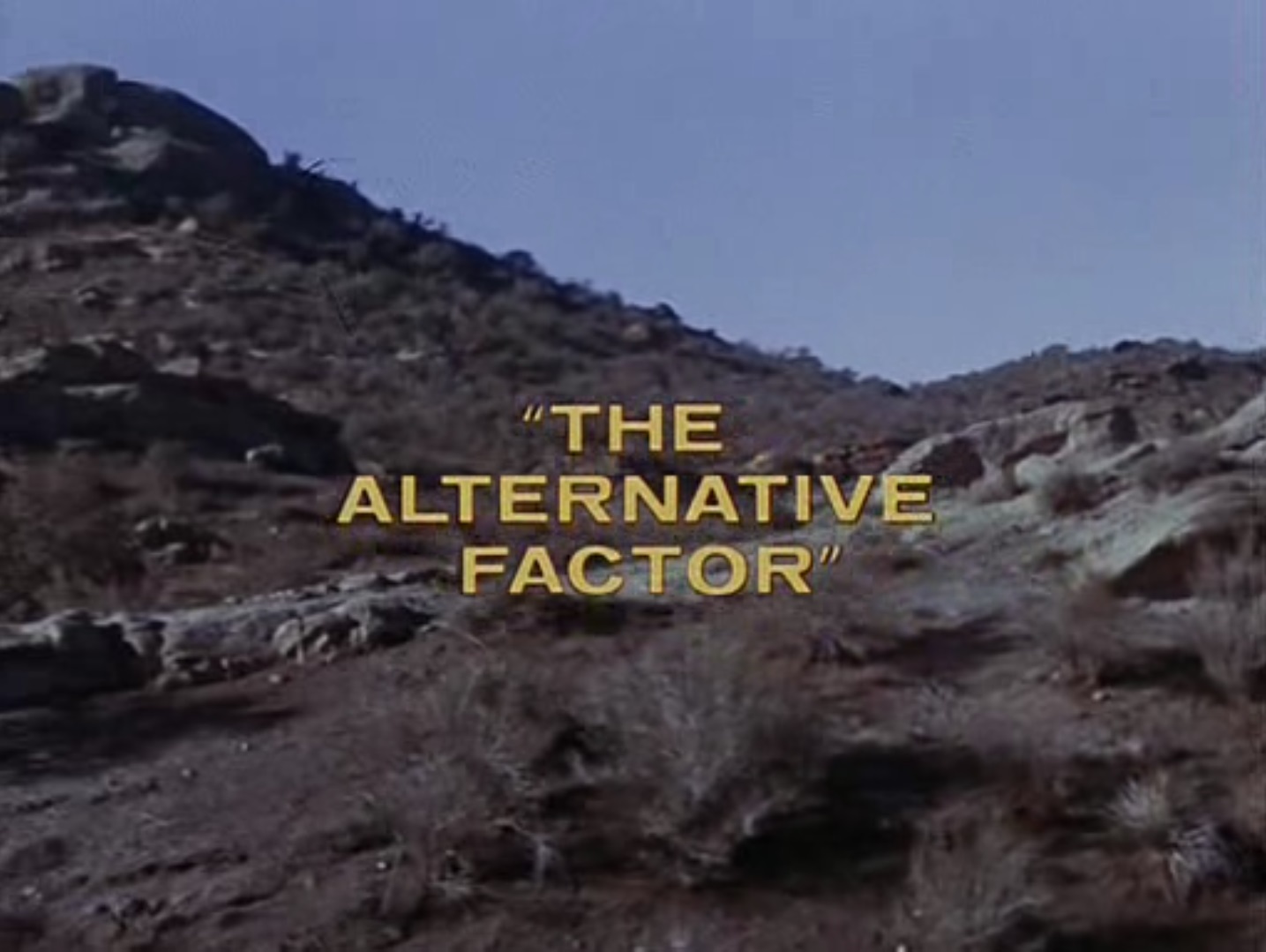
Continue reading [April 6, 1967] But what of Star Trek? ("The Alternative Factor")
The Devil’s Advocate

by Andrea Castaneda
There appears to be a recurring theme in Star Trek that showcases how a planet's native species respond to human interaction. In “Arena”, “Galileo Seven”, and “Man Trap”, we’re presented with an outright hostile response that thwarts the possibility of a sustainable settlement. “Devil in the Dark " appeared, at first glance, to go in this direction. However, it is the way this week’s “monster” is framed in an empathetic light that sets this episode apart.
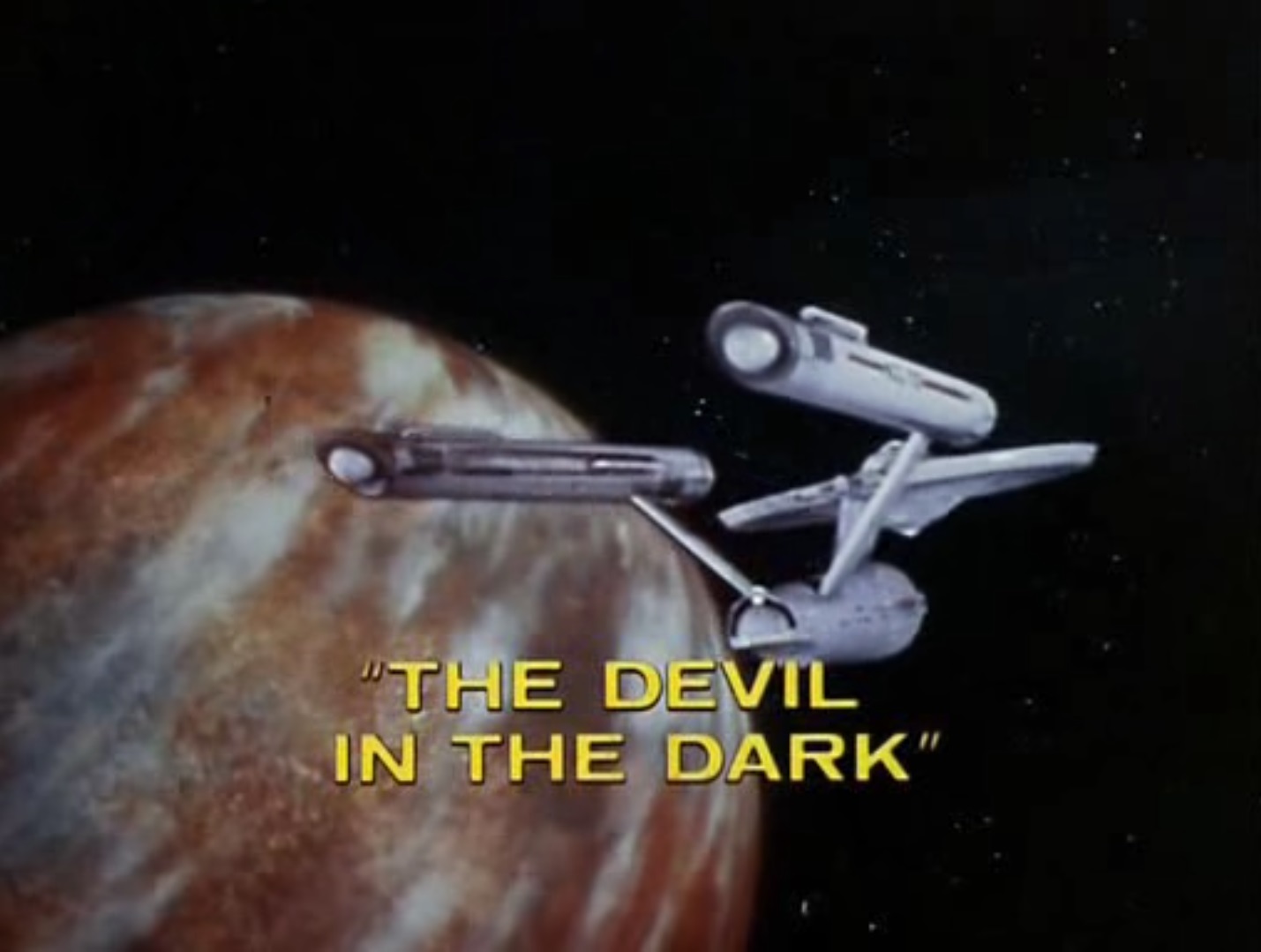
The episode proceeds predictably…at first. On planet Janus VI, a mysterious thing is killing man after man deep in the Pergium mines. Enter the Starship Enterprise, who are called to investigate the matter. After getting briefed by colony chief mining engineer Vanderberg, Kirk and his crew set out to track down and kill whatever this creature is. But not before Spock examines a perfectly spherical rock, describing it as a “geological oddity”. Vanderberg refers to it as a silicon nodule, saying his team found thousands of them after they opened a new level.
It didn’t take a lot of brain power for me to deduce that the nodules were probably the creature’s eggs. The mining operation threatened its nest, so the creature began to defend it. The Gorn in “Arena” and primitive species in “Galileo Seven” responded with a similar hostility to the perceived “invaders”. Why would this creature be any different?

"This egg-like thing? No idea what it is."
Suddenly, alarms blare, the crew rushes outside, and to their horror they see there’s been another attack. Not only is another man left dead, but the creature has taken a vital piece of equipment, one necessary to sustain human life. And while Scotty’s ingenuity buys them time, they now have a race against the clock. Perhaps that’s why Kirk takes on a more militant approach, ordering his men to shoot the creature on sight.
Eventually, Kirk and Spock come face to face with the creature at last. Looking like a blob made out of a shag rug and Chef Boy-ar-dee, it approaches them, and the men fire their phasers. Wounded, a piece breaks off, and it retreats back into the rock. Examining the piece, the men conclude that it is a silicon based lifeform–explaining why it didn’t appear on their carbon-based lifeform scans. As the men speculate about what the creature is, a fear dawns in Spock that it may be the last of its kind.
We are given a similar situation in "Man Trap", in which a lone shapeshifting salt-sucking creature kills many members of the Starship Enterprise to survive. But as the conflict hinges more on McCoy's personal affection for the creature–who looks like his old flame–its death is more symbolic of McCoy choosing duty over love. We get one mournful moment when Kirk reflects on the now extinct species, but it is framed as something that had to be done.
But this is where “Devil in the Dark” makes the most significant deviation from the format. When confronted with the creature again, Kirk has a change of heart when he sees it recoil from the sight of the phaser. Realizing it may be more than just a mere animal, he asks Spock–who now wants the creature dead to save Kirk–to touch minds with it.

Heart to…heart?
This was the moment that made this episode stand out for me. Speaking through the Vulcan, the creature identifies itself as a Horta and explains how she only started the attacks after the miners destroyed her eggs. Because the rest of her species died out, something that happened every 50,000 years, she was left as the lone protector of the eggs.
We are given a similar exchange in "Arena", when the Gorn tells Kirk his kind "destroyed invaders" of his planet, but it isn't nearly as emotionally charged as the Horta’s. Through Spock, the creature sobs, lamenting the impending doom of her kind and calling the humans “murderers” and “devils”. Kirk now realizes the misunderstanding and calls McCoy to heal and save the creature.
Unbeknownst to them, the angry mob of miners overwhelm the Enterprise’s security team, and rush to claim… whatever the Horta has for a head. But Spock, having learned her species’s history, convinces them that she is benevolent by nature. As proof, he explains that she had known about the human colony for the last 50 years, only attacking in recent months as a last resort to protect her species. And by some miracle, the men’s anger is suddenly quelled, having seen the error of their ways. It is, perhaps, an over-generous portrayal of human forgiveness. But maybe the agreement of letting Horta hatchlings help in their mining operations–thus giving them more profit–is what helped let bygones be bygones.
“Devil in the Dark” isn’t a flawless episode. But the moving portrayal of the Horta lamenting her lost future is what made this episode one of my favorites. It offers a new perspective for what the native species of a planet may feel when confronted with the “alien” humans. Still, I can't help but spare a thought for the salt-creature of "Man Trap", and even the Gorn in "Arena", who also may have felt the same sense of existential anguish.
Five stars.
FUTURE IMPERFECT

by Joe Reid
I love and enjoy a good sci-fi story. I am a lover of the works of Mr. Robert Heinlein and other masters like him. In the pages of a good sci-fi book you have fantastical worlds and brave people that are navigating those worlds for the adventure, to save those they care for, and to just plain do what is right and honest. Good sci-fi is so unlike our present world, where the strong, by hook or by crook, take what doesn't belong to them for the benefit of some high and mighty master who already got more scratch than a dog with fleas. Scratch stands for money, for those of you unfamiliar with street lingo.
So this episode comes along and reminds me a little too much of the world we live in. It starts off underground on a planet with the cleanest looking miners I ever laid my eyes on. They have a problem. Something is stopping the means of production of whatever it is that these miners in their all too clean jumpsuits need to mine. That problem is these workers are dying for some reason. Notice that it takes 50 of these men dying before the corporate bosses do something about it.

"You'll be just fine… Bob, was it? Ah, who cares?"
What do their bosses do about it? They do what all big money types do. They send in a fixer to make the problem go away. In comes the crew of the spaceship Enterprise. Their leader Captain “Jim” Kirk shows up and it is pretty obvious early on that all he cares about is making sure that the miners get back to producing. It doesn't matter that there’s 50 men fewer to do the work they were doing before. Money is money!
For almost all of the episode, Kirk is single-mindedly focused. Getting those space rocks moving is more important than anything else. So much so that when we learn that the creature that is killing the miners is a new form of life never seen before, Kirk would rather eliminate it than try to communicate with it. Dr., or Mr. Spock (I get confused about which is right) tries to stop him from killing the creature, but it is to no avail, as the call of space dollars drowns out any call to “seek out new life and new civilizations”. Kirk cruelly dismisses the concerns of his friend and pulls rank on him to force compliance out of the creature. So much for friendship huh, Jim?

"I'm right behind you, Spock."
In the end, it appeared to the viewer that Kirk had a change of heart and started to care about something other than money. He then uses Mr. Spock to talk to the creature, putting Spock at personal risk. For what? So that Kirk can save the creature? Bring back the dead miners? Nope! Having discovered that the creature was smart and didn’t want its species to be killed off, Kirk understood that he could use that fear to make even more money for the corporate interests that he works for. Thinking just like the greedy men of our world, and crushing any hope that the future will be a better place for any of us.
[I'll also note a striking thing Joe said after the episode: "Everyone's happy. The natives work for free, and in return, they get to keep their lives." One wonders if the Horta would have been preserved had they not been such good miners… (ed.)]
Before ya’ll get too upset with me, I know, this is just a TV show. It isn’t real. I'll tell you what though. Things we see on TV and read in paperbacks might very well be real. Only, not just yet. It is the kind of real that we hope to see someday. The kind that we will make happen in time.
And that's why I didn’t care much for this episode of Star Trek. Instead of providing a hopeful vision of the future, I just got to see the same kind of motivations that leap up at me from the pages of newspapers. I hope that the creators of this show can offer me something more hopeful in other episodes. If Star Trek keeps looking like downtown Detroit, where big corporate bosses only care about profits and send their stooges to enforce their desires, I fear that there may not be much future for this picture of the future.

Friendly interaction in Kercheval, Detroit, last summer.
3 stars
A Vulcanian’s Best Friend

by Abigail Beaman
If you were to ask my opinion about Gene Roddenberry's Star Trek, I would of course start gushing over how much I love the cast and concept of the show. It has to be one of my favorite programs that I sit down and watch regularly. Each character has a unique personality that sets him and her apart from each other, so much so that I can remember their names.
While Captain James T Kirk is charismatic and headstrong, Doctor Leonard “Bones” McCoy is cantankerous and hot-headed; but no one stands out as much as Mister Lieutenant Commander Spock. The reason is simple: he is half-Vulcan(ian?), an alien race whose members either lack emotions or repress said emotions. Due to his half-Vulcan side, Mister Spock is best described as a logical, calm, and stoic computerized man. And while it seems he gets along with most of the crew, despite his emotionless stature, there seems to be just one person that Spock truly cares about on the Enterprise. That man of course is Captain Kirk.

How do I reach this conclusion? Well, simply the only time Spock seems to break his stoic behavior and disregard any morals he has (without the aid of a certain flower’s spores) is when Kirk is in trouble. This episode shows just how deep the relationship runs between the half-Vulcan scientist and the charismatic human captain.

At the start of the episode, Spock makes it clear that he doesn’t want to kill the Horta, as he believes it to be the last of the species, a reservation he expressed in "The Man Trap", too. Spock in other episodes also has demonstrated that he values life above all else. It seems that preserving life is a moral of his and to break it would be like him breaking his stoic, Vulcan behavior. Even when Kirk tells the security team that they are to kill the Horta on sight, Spock disregards this direct order and tells the team to try to keep it alive if possible.

"Spock, what did I just say? Kill, not capture."
That is, until Kirk is at the Horta’s mercy. Spock’s opinion of the situation changes entirely: he tells Kirk to shoot it, to kill it before it kills him. The fear that Spock displays not only in his voice but also his movements clearly paints a picture, that Kirk is someone Spock cherishes greatly. Spock runs down the cave to save his friend only to find out Kirk has had a change in heart. Spock was not only ready to kill the Horta, but to sacrifice his own morals for Kirk. I don’t know about you, but the only time I would consider betraying my morals is for someone I consider a true friend, not someone who I work with.

"I'm quickening my pace, Jim!"
Clearly, the relationship between Spock and Kirk goes beyond that of just co-workers. It's a revelation that has been a long time coming, and a welcome one. Which is why I felt compelled to discuss it over any other aspect of the episode. That Spock sees Kirk as someone he cares about, enough to break his “Vulcanian cool” and morals to save, leaves me reassured. Maybe Spock can't be "happy", as he stated last episode. Nevertheless, even if Spock is an emotionless alien, he still can find a kind of companionship in his best friend, Jim Kirk.
Four stars.
Fighting Fire with Empathy

by Jessica Dickinson Goodman
I loved the twistiness of this episode. First Kirk wants to kill the Horta, then he defends it with not only his own life, but his crew's bodies. First it's a monster, then a mother. First Spock is his usual cool, emotionless self, and then he is screaming in pain as he connects himself mentally to the Horta. First the silicon nodules have "no commercial value" and then they become the hope of a new golden age of mining on Janus 6.

"Oooo, that smarts!"
Just like in "Arena," in "The Devil in the Dark" we are confronted with the colonial shortsightedness of Starfleet. Janus 6 is a "long-established colony" whose longtime colonists have somehow managed to miss an entire species of rock-dwelling creatures. Now, their 50,000 year breeding cycle might explain this, but stepping away from the specifics, it does remind me of modern failures of imagination, particularly in cases of colonial governments failing to understand the places they seek to control.
For example, the refusal of the U.S. Forest Service to use the wildfire management strategies that the Tongva Nation, Chumash Bands, and other peoples have used since time immemorial in what is now called California. Last November, this led to the tragic death of 10 hotshot firefighters in the Loop Fire near Los Angeles. Like the Horta, that wildfire burned hot and seemingly without reason; but wildfires, like Hortas, often have a logic of their own. The canyons that burned in the Angeles National Forest had been left uncleared for decades of misguided fire-suppression policies. When all of that mass had built up, of course it burned too hot and too fast to stop. The failure of the Janus 6 geologic survey team to find local life built up another kind of conflagration, one that killed 50. One hopes they won't make that mistake again.

The Loop Fire
Though we can't use Spock's Vulcanian skills to read the minds of wildfires, one of the beauties of science fiction is the hope that we might one day communicate with someone as different from us as blood and stone, or fire and water. The tension between what is and what could be, the twistiness as we get from here to there, is the fun of the genre, and this episode did a great job of letting us enjoy the ride.
4 stars.
In the next episode, Kirk and Spock go to the California Renaissance Faire. Come join us tomorrow at 8:30 PM (Eastern and Pacific)!.
Here's the invitation!